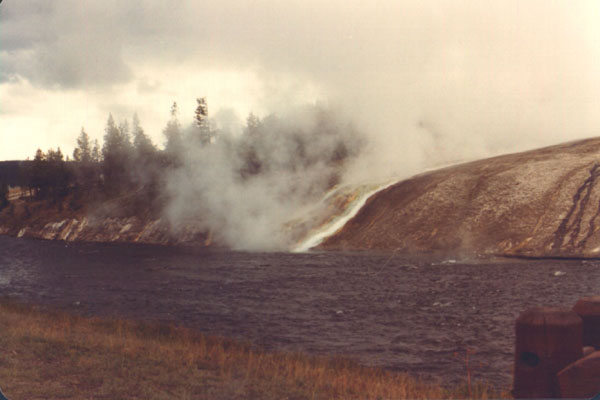
|
Another shot of the hot, mineral filled water of the thermal areas mixing
with the cold, pure water of this mountain river. |
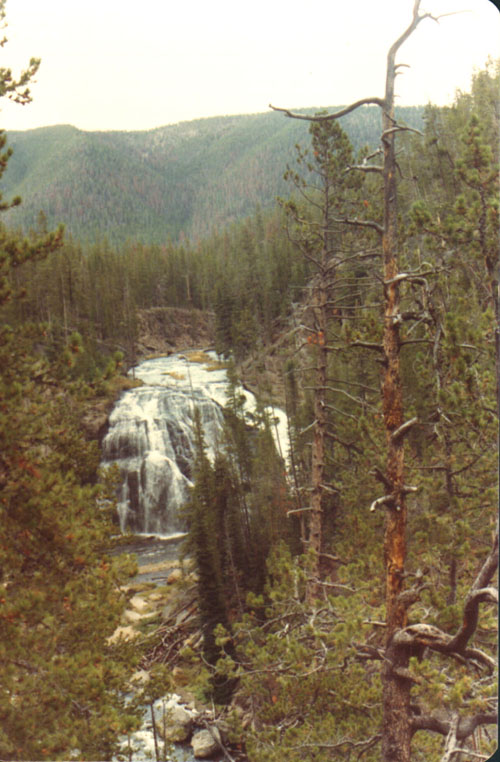
|
One of the constant scenic views common in the central, and eastern
portions of the park. There are several mountain ranges in the eastern and
northeastern sections of the park, particularly where Yellowstone abuts the
Shoshonee National Forest. |
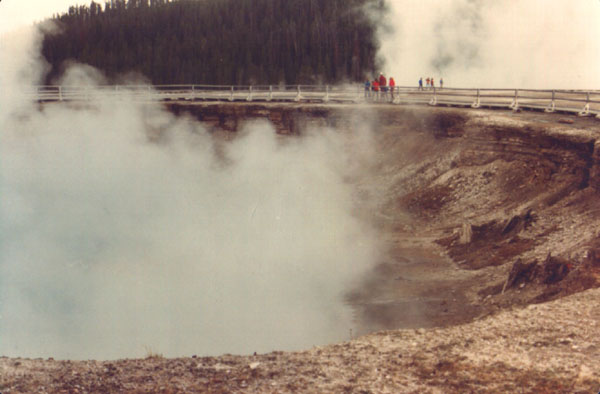
|
A large, crater like, bowl formed by the action of a thermal pool. This
is one of the largest thermal features I saw during my stay. |
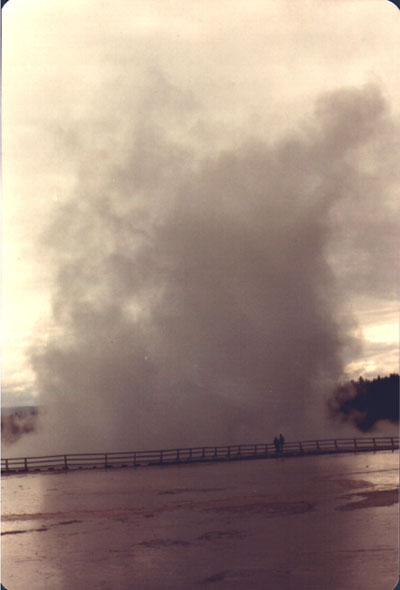
|
A view of the same large pool from a bit further back. Look at the size
of the rim, and the head of steam, compared to the couple by the railing.
In the foreground, it can be seen that this large pool is part of a series
which surround the narrow, tourist walkway. |
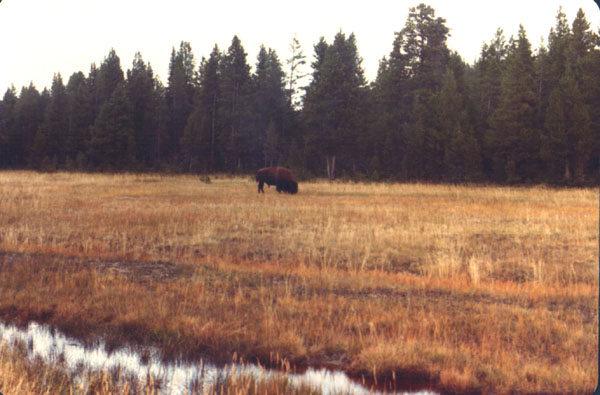
|
A lone buffalo, out minding his own business. |
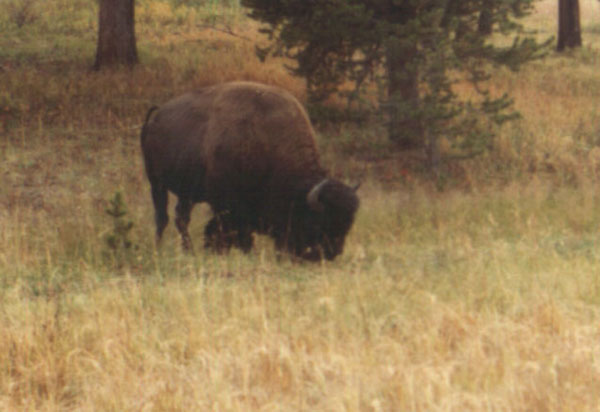
|
Zooming in on this large and dangerous animal. Thank goodness for telephoto
lenses. Few photographers would dare to physically approach an animal of this
size and strength as closely as this long lens makes it appear. |
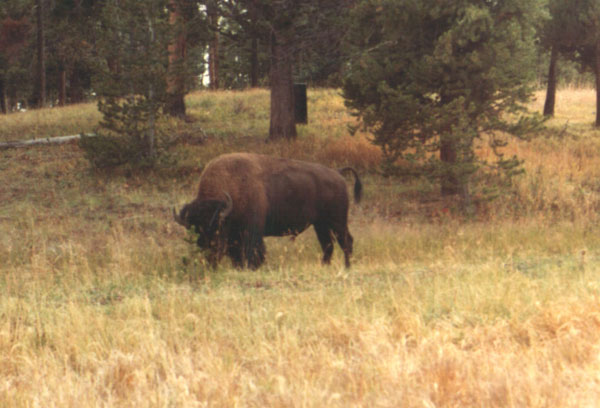
|
A little closer to this giant. He seems to be taking a bit of a notice
of me. This is the point at which the intelligent man considers backing off
a bit. |
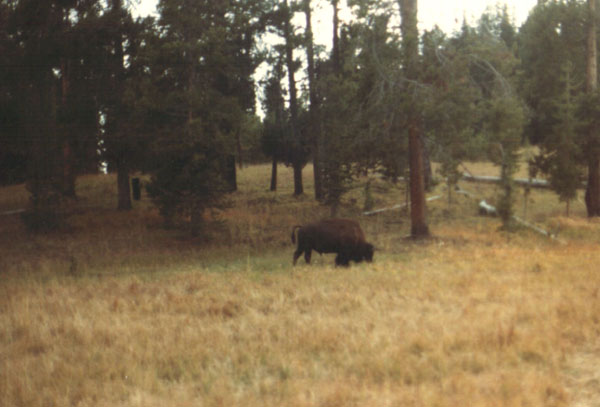
|
A little farther off, and a little safer. The buffalo has put his head
back down, and no longer seems to be watching me, though he certainly is maintaining
an awareness of where I am. This is about the time a park ranger came by
and chased me off, saying I was too close for safety. |
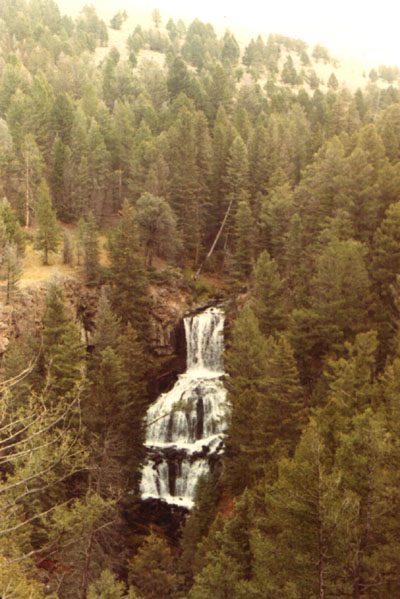
|
Another waterfall. They are found in abundance throughout the park.
This is a natural result of the abundant melt water from higher elevations,
feeding the numerous rivers flowing through several mountain ranges which
run through portions of the park. |
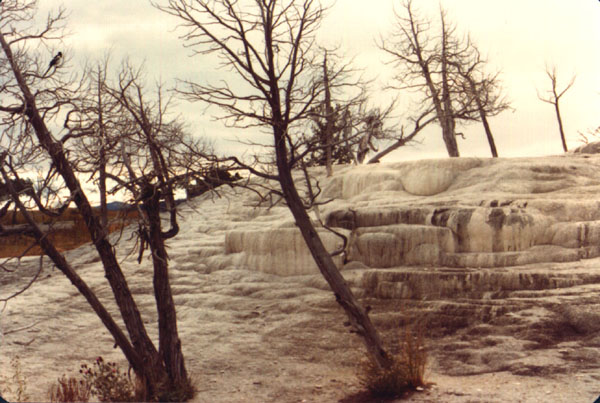
|
Mammoth Hot Springs, in the relentless process of building up terraces,
and pools. What looks like ice is actually calcite. It seems as if a few of
the trees in the foreground are actually still alive, though their days are
surely numbered. |
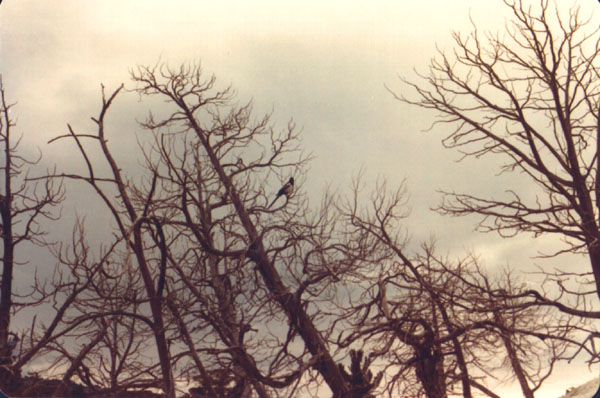
|
A magpie, up in one of the trees by the hot springs. |
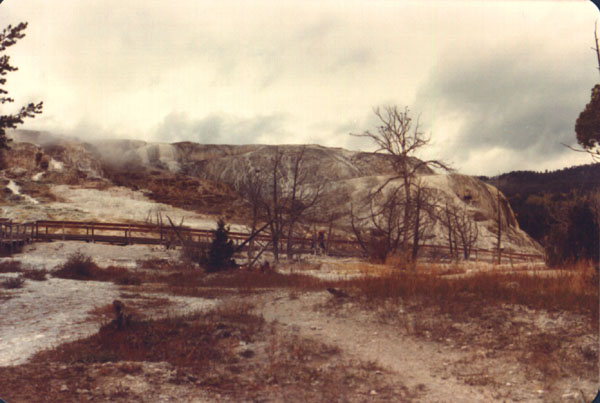
|
Bulging out of the side of this gentle slope, is the formation known
as Mammoth Hot Springs. The small settlement of Mammoth is nearby, and is
the only permanent habitation in the park. |
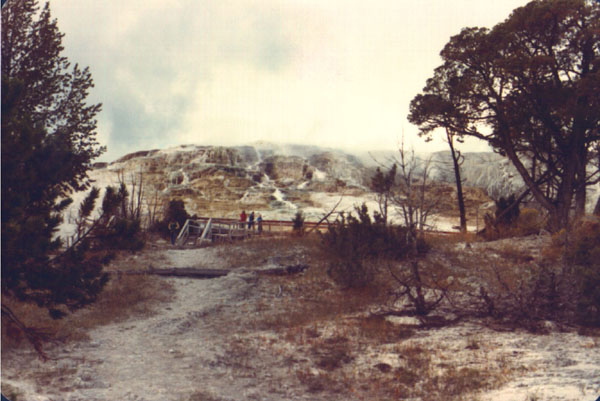
|
A view up the hill towards Mammoth Hot Springs. As can be seen, there
is considerable run off down the side of the hill, calcifying some of the
soil. |
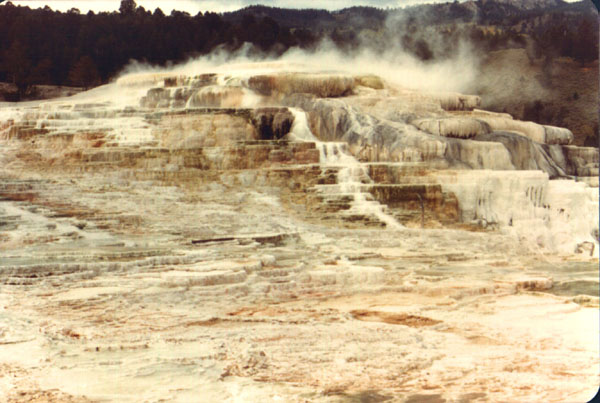
|
The variety of colors are made mainly by bacteria and algae. Like the
less magnificent thermal pools, Mammoth Springs plays host to an abundant
variety of heat loving micro organisms. |
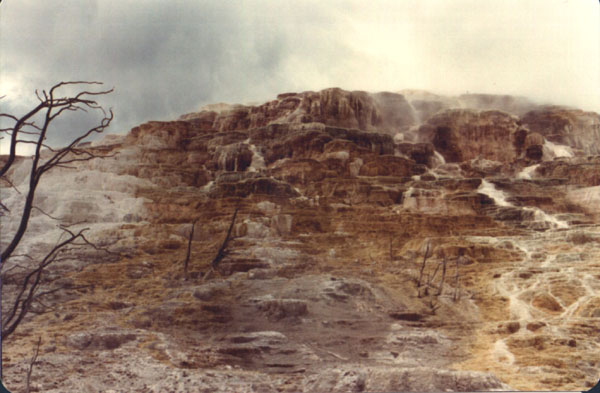
|
A look up a virtual mountain of accreted calcite. Every year this structure
becomes marginally larger, as mineral rich water continues to rise to the
surface, and evaporate. Had Mammoth come to the surface on a plain or basin,
instead of the crest of a hill, it would have been just another thermal pool.
It was formed by the same process as the thermal pools in the geyser basins. |
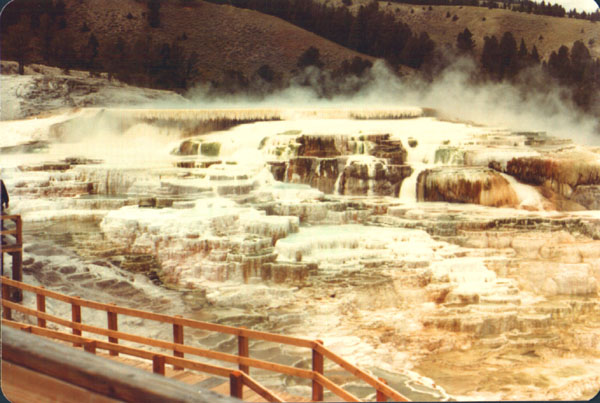
|
Mammoth Hot Springs, in all of it's glory. The differing coloration
of the pools reflects the different species of algae. These in turn, indicate
the different temperatures of the waters. Each different color of algae, or
bacteria, thrive in a different temperature of water. The same holds true
in the thermal pools scattered through the park. |















